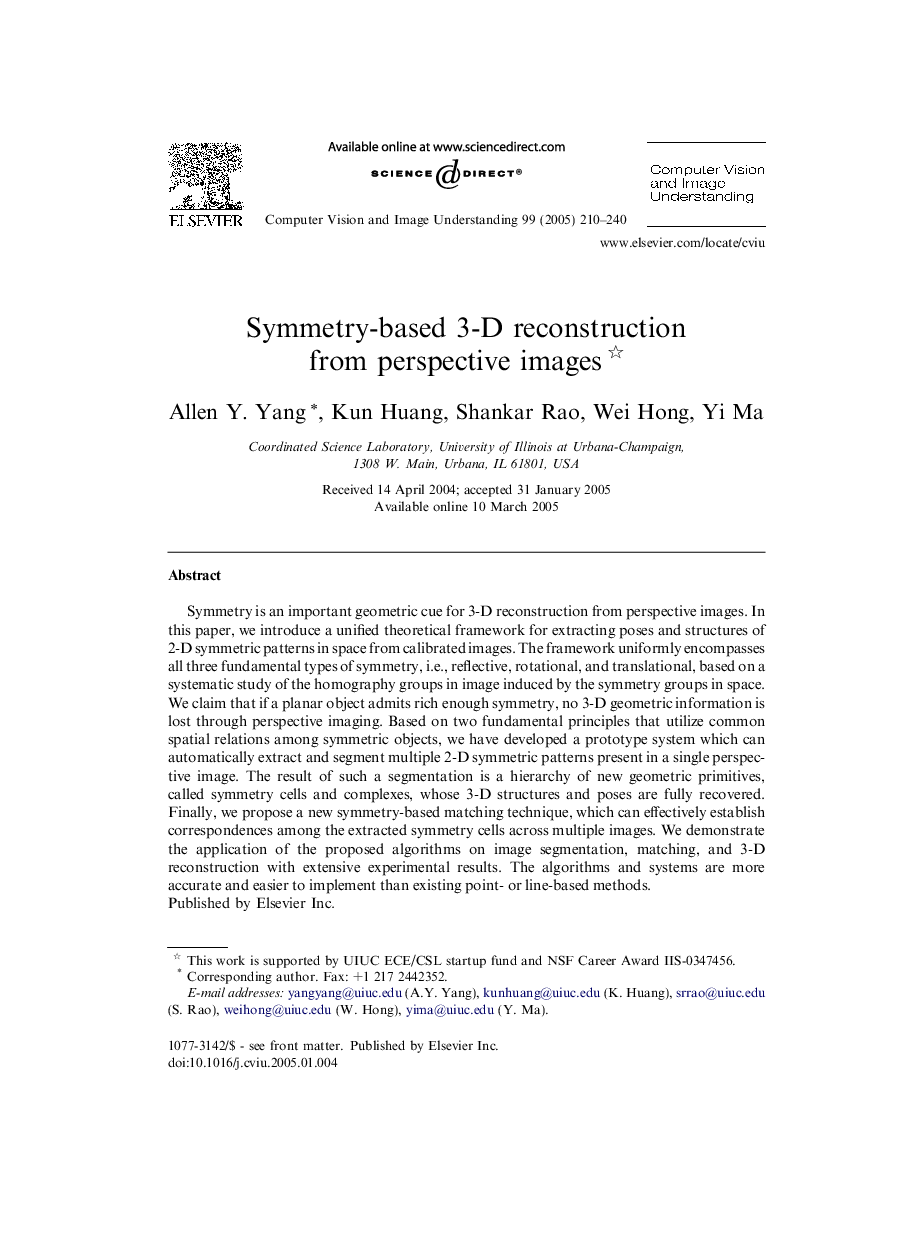| Article ID | Journal | Published Year | Pages | File Type |
|---|---|---|---|---|
| 10359909 | Computer Vision and Image Understanding | 2005 | 31 Pages |
Abstract
Symmetry is an important geometric cue for 3-D reconstruction from perspective images. In this paper, we introduce a unified theoretical framework for extracting poses and structures of 2-D symmetric patterns in space from calibrated images. The framework uniformly encompasses all three fundamental types of symmetry, i.e., reflective, rotational, and translational, based on a systematic study of the homography groups in image induced by the symmetry groups in space. We claim that if a planar object admits rich enough symmetry, no 3-D geometric information is lost through perspective imaging. Based on two fundamental principles that utilize common spatial relations among symmetric objects, we have developed a prototype system which can automatically extract and segment multiple 2-D symmetric patterns present in a single perspective image. The result of such a segmentation is a hierarchy of new geometric primitives, called symmetry cells and complexes, whose 3-D structures and poses are fully recovered. Finally, we propose a new symmetry-based matching technique, which can effectively establish correspondences among the extracted symmetry cells across multiple images. We demonstrate the application of the proposed algorithms on image segmentation, matching, and 3-D reconstruction with extensive experimental results. The algorithms and systems are more accurate and easier to implement than existing point- or line-based methods.
Keywords
Related Topics
Physical Sciences and Engineering
Computer Science
Computer Vision and Pattern Recognition
Authors
Allen Y. Yang, Kun Huang, Shankar Rao, Wei Hong, Yi Ma,
